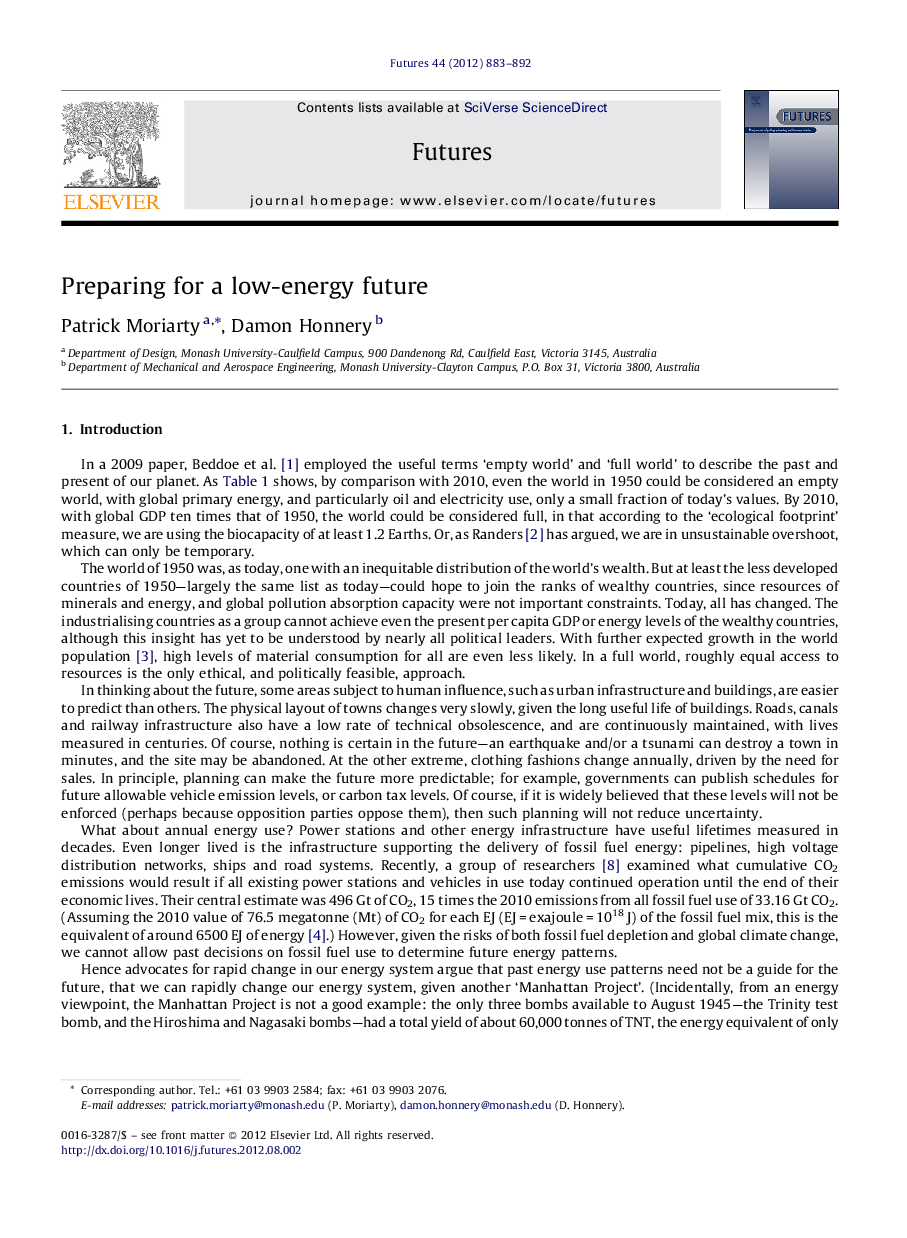| کد مقاله | کد نشریه | سال انتشار | مقاله انگلیسی | نسخه تمام متن |
|---|---|---|---|---|
| 1015611 | 939885 | 2012 | 10 صفحه PDF | دانلود رایگان |

Nearly all official forecasts see ever-rising levels for global energy consumption, in line with forecast continued global economic growth. Global primary energy use is thus anticipated to increase from its present level of over 500 EJ (EJ = exajoule = 1018 J), to as much as 1000 EJ by 2050. We argue that it is unlikely that anywhere near this level of energy will be available in 2050, because of resource and environmental constraints on fossil fuels, which presently account for over 80% of global primary energy use, and time and other constraints on rapid uptake of alternatives. Instead we propose that the world will need to make do with far lower levels of energy than we use today. We give an outline of the way presently high energy use societies must change to accommodate lower levels of per capita consumption. This will involve replacing present growth-oriented economies by ones based on human needs.
► We now live in a full world, not an empty world.
► Global GDP is tightly linked to global primary energy use.
► Resource and environmental constraints will limit future energy use.
► Future OECD energy use will need to be much lower than today.
► A human needs economy will need to replace the growth economy.
Journal: Futures - Volume 44, Issue 10, December 2012, Pages 883–892